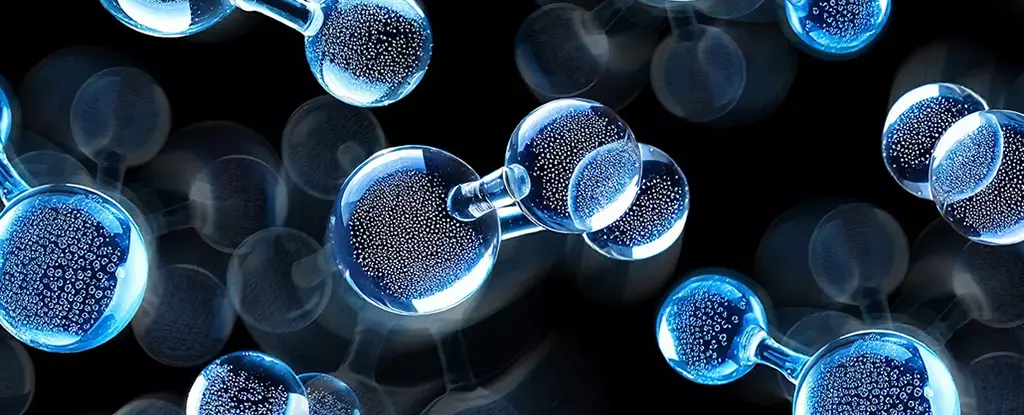The recent experimental observation of plastic Ice VII marks a significant milestone in our understanding of water’s behavior under extreme conditions. Once relegated to the realm of theoretical models, this exotic phase of ice is now poised to reshape our views on the potential for life beyond Earth and the dynamic processes occurring within distant celestial bodies. But what exactly is plastic Ice VII, and why does its discovery matter?
Plastic Ice VII is not merely an intriguing scientific artifact; it is a phase of water that exists under certain extreme temperatures and pressures. To form this unusual ice, water molecules must be subjected to extraordinary conditions—specifically, pressures up to 6 gigapascals and temperatures that can soar to 327 °C (620 °F). Such environments are rarely found in everyday life, making the exploration of plastic Ice VII particularly exciting for researchers. Its formation is marked by a complex, interwoven cubic structure, signifying an altered arrangement of water molecules that distinguishes it substantially from common forms of ice such as Ice I.
Research has indicated that the characteristics of plastic Ice VII could hold clues about similar structures possibly existing in the icy mantles of giant planets like Neptune and in moons such as Europa, where conditions may mimic those used in experiments. As scientists create Ice VII in controlled laboratory settings at institutes like the Institut Laue-Langevin in France, they are also unwittingly unlocking secrets to extraterrestrial environments.
One of the key techniques employed to identify plastic Ice VII is quasi-elastic neutron scattering (QENS), which tracks the movement of particles and their dynamics at the microscopic level. This method provides invaluable insights into how molecular rotations and transitions occur within the ice structure. Notably, QENS revealed that rather than experiencing fluid, free rotations expected from a molecular rotor, the hydrogen atoms within plastic Ice VII rotate in staggered motions. This unexpected behavior suggests a complex interplay among molecular bonds as they form and break, prompting researchers to reconsider their previous assumptions.
Such innovative techniques and resulting findings underscore the versatility and importance of QENS in probing phase transitions, particularly as they relate to ice—a substance central to our understanding of both terrestrial and extraterrestrial environments. According to physicist Maria Rescigno from the Sapienza University of Rome, the ability of QENS to capture both rotational and translational dynamics is crucial for mapping out the exotic characteristics of ice forms like Ice VII.
The implications of discovering plastic Ice VII are vast, particularly when considering the possibility of life in the universe. Ice plays a vital role in astrobiology, serving as not just a potential habitat but also an indicator of chemical processes that sustain life. Plastic Ice VII could offer new insight into the conditions present in subsurface oceans on other celestial bodies, as well as contributions to the evolution of planetary atmospheres.
Furthermore, understanding plastic Ice VII could guide future investigations into the dynamic processes that shaped the ices found on moons such as Europa, believed to harbor the conditions necessary for life. As researchers strive to delineate the transition mechanisms of plastic Ice VII, they are also engaged in deciphering whether this transformation occurs gradually or through abrupt changes—an understanding that may extend to planetary formation theories and the geological activity of ice-covered worlds.
Looking ahead, the exploration of plastic Ice VII opens several avenues for research. The continuous and gradual transition to this exotic ice state presents a tantalizing question about the processes that govern such phase transitions. As physicist Livia Bove mentions, delving into this continuous transition scenario may yield significant insights that can be applied beyond our own planet.
With ongoing research and advanced spectroscopy techniques at the forefront, the scientific community remains in an exciting position to delve deeper into the properties and behaviors of water and ice. The ability to recreate these extreme conditions in a laboratory paves the way toward innovations that could redefine our understanding of water’s role throughout the universe.
The revelation of plastic Ice VII is not just an intriguing scientific advancement but a potential portal to understanding more about the cosmos and its capacity to support life. It urges us to take a closer look at the minute details of ice behavior, ultimately leading to broader interpretations of planetary systems and the chemical processes beneath their icy façades.

Leave a Reply